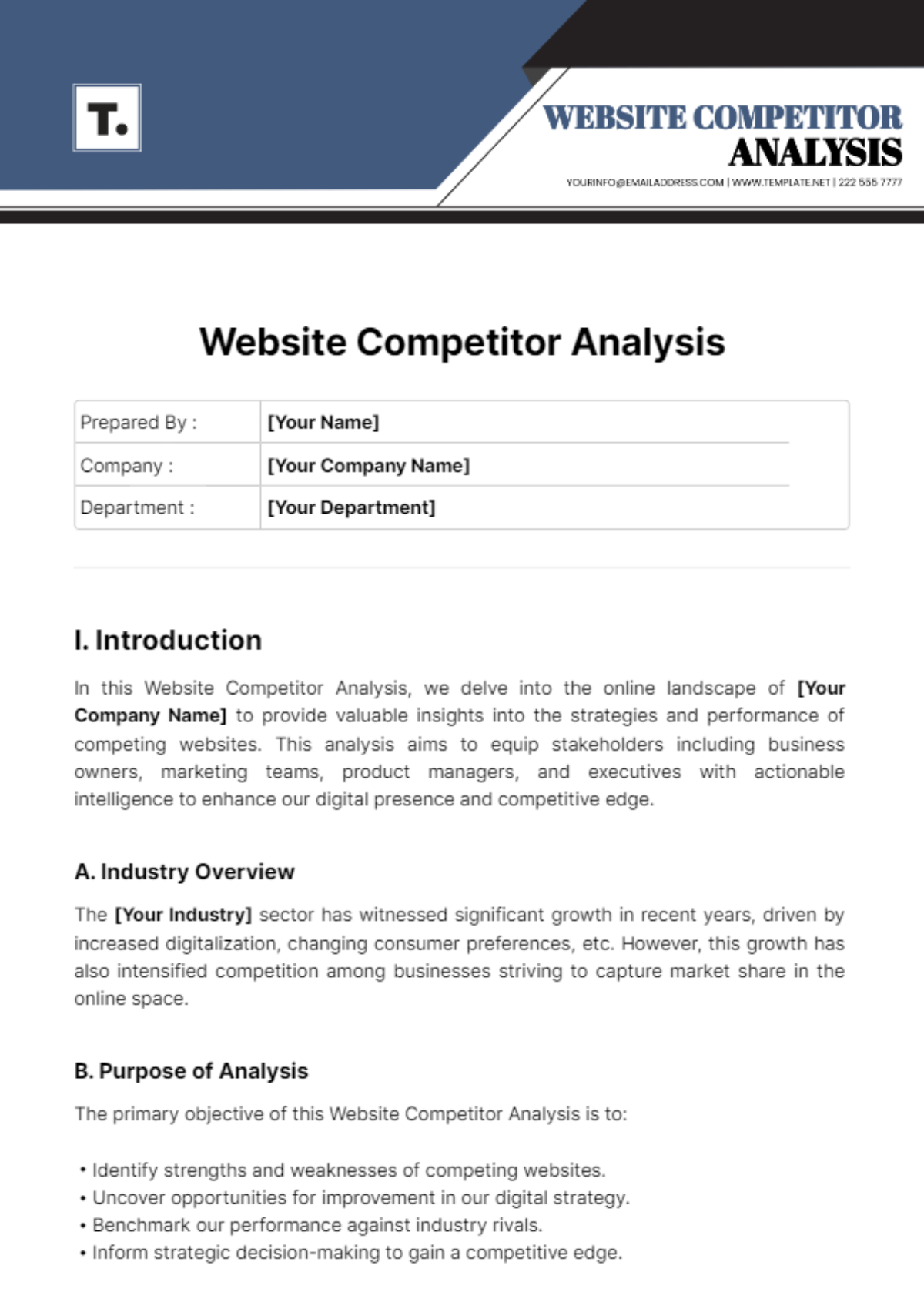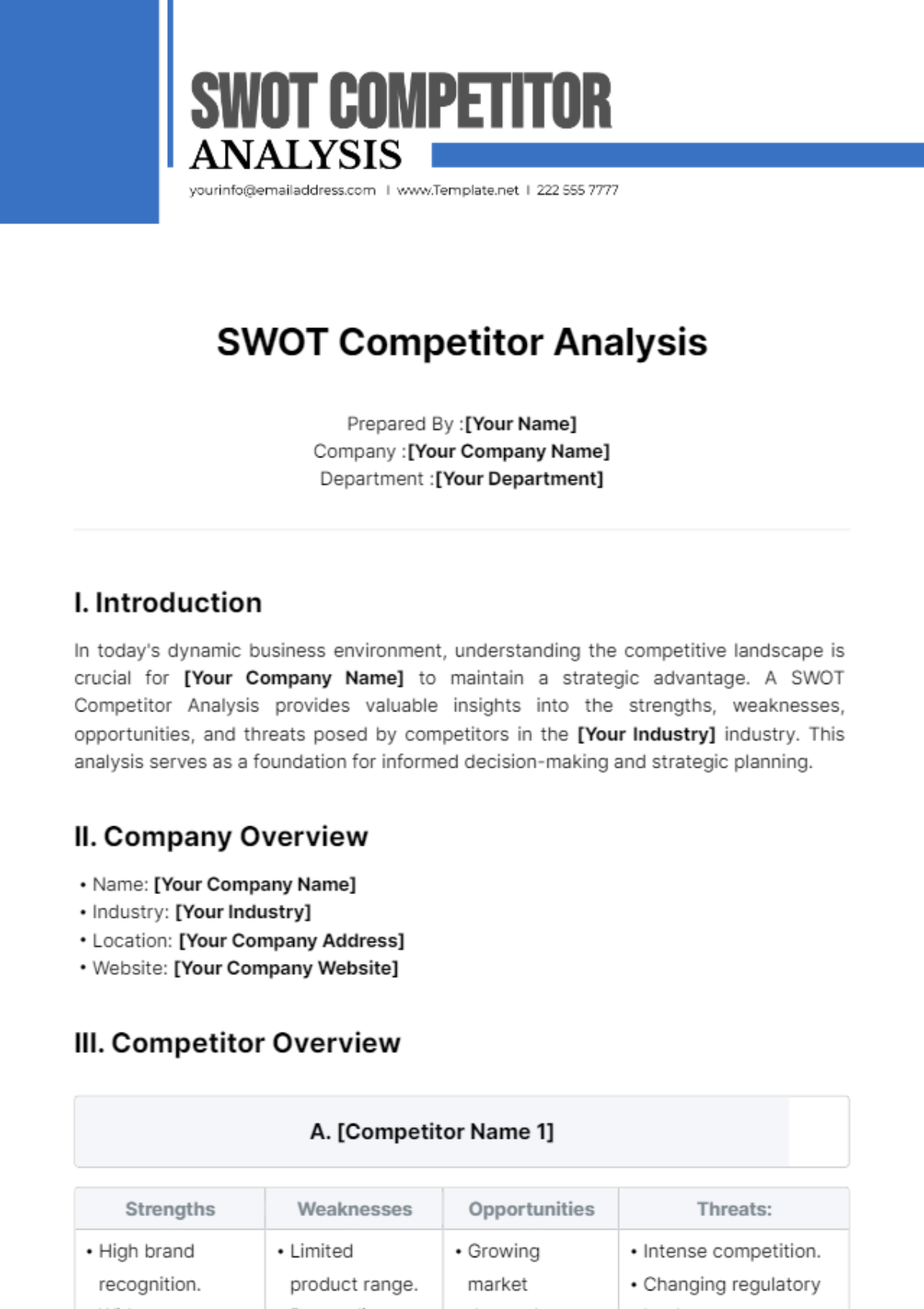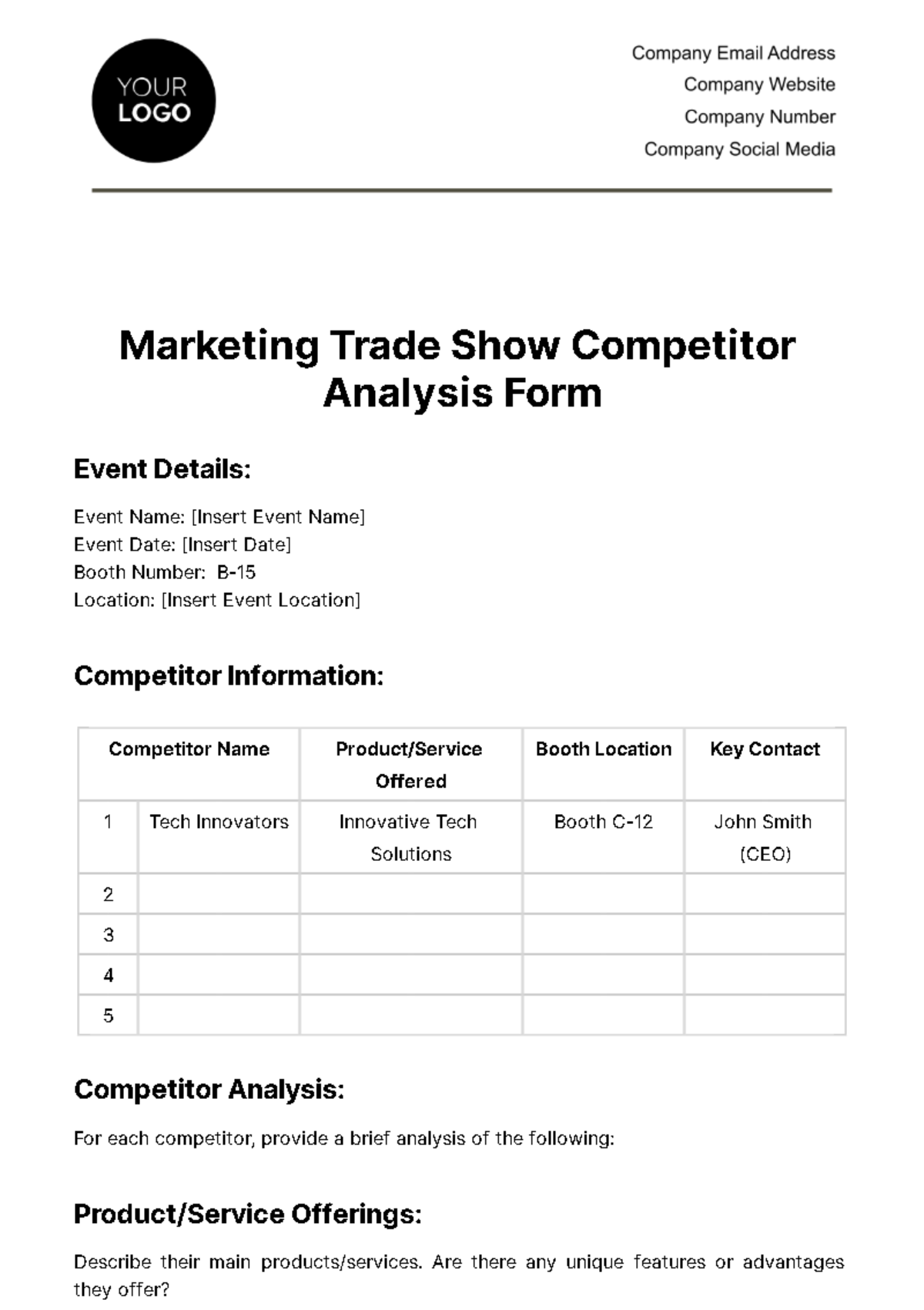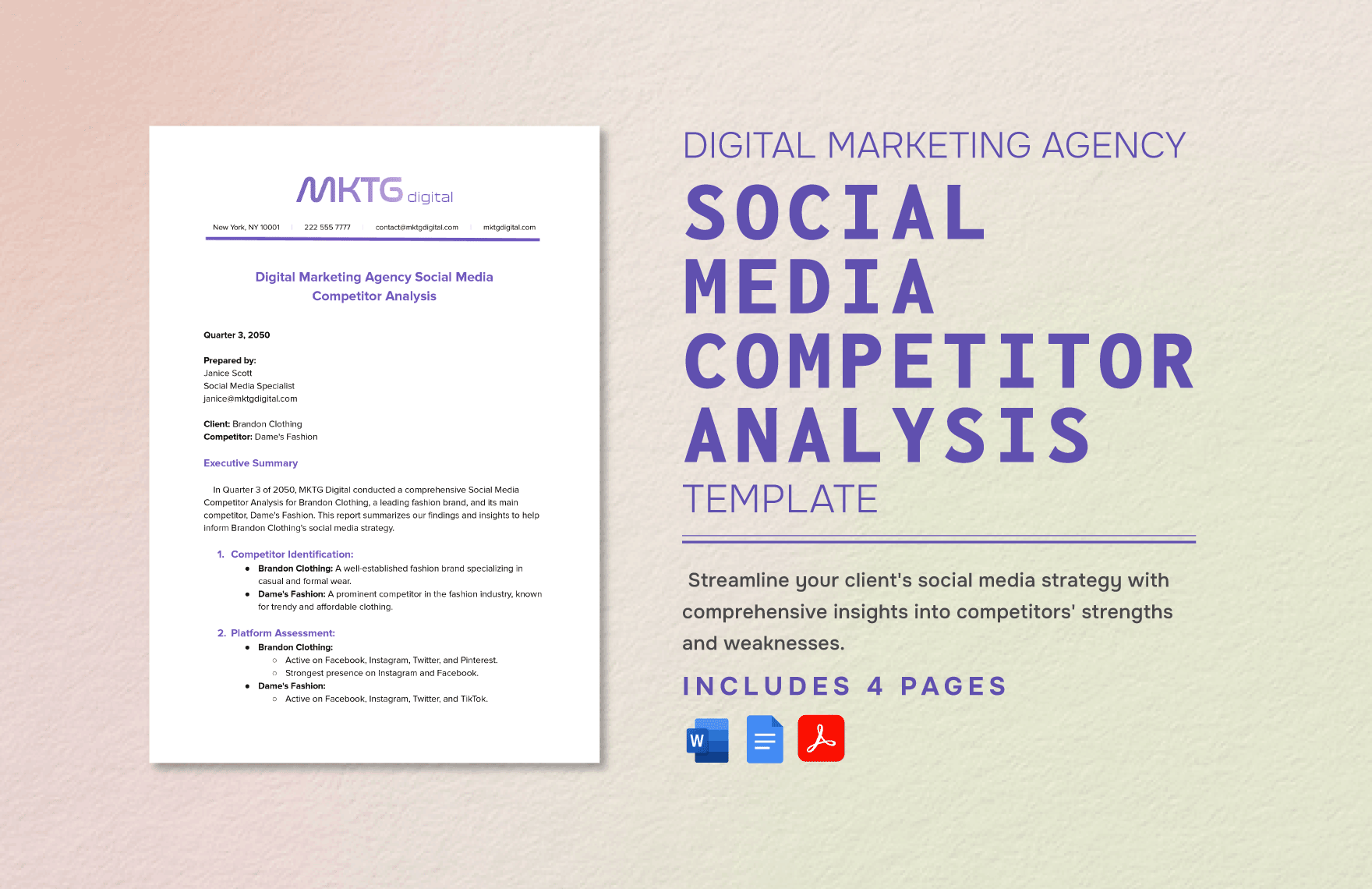Discover your Competitive Edge with Competitor Analysis Templates from Template.net
Bring your business strategy to life with Competitor Analysis Templates from Template.net. Perfect for marketing professionals, entrepreneurs, and business analysts alike, these templates enable you to keep your team engaged, enhance your market insights, and outpace the competition effortlessly. Whether you're looking to promote a strategic planning session or streamline your SWOT analysis meeting, these templates have you covered. Each template includes essential elements such as time frames, competitor profiles, and SWOT metrics, eliminating the need for creating insights from scratch. Best of all, these templates come with no advanced spreadsheet skills required, offering professional-grade design and customization options. You can choose from various formats that fit perfectly for both print or digital distribution, allowing you to focus more on formulating winning strategies rather than format details.
Discover the many Competitor Analysis Templates we have on hand, curated to suit all your strategic planning needs. Quickly select a template that fits your purpose, easily swap in your data, and tweak visual elements such as colors and fonts to match your branding. Take it a step further by dragging and dropping icons, integrating graphics, or utilizing AI-powered text tools to refine your presentations. The possibilities are endless, allowing you to craft comprehensive analyses skill-free. Plus, with regularly updated templates, you’ll always have access to fresh, innovative designs. When you’re finished, download or share your project via link, print, email, or export for seamless presentation across multiple channels. Our platform even enables real-time collaboration, making it ideal for team efforts.

















































